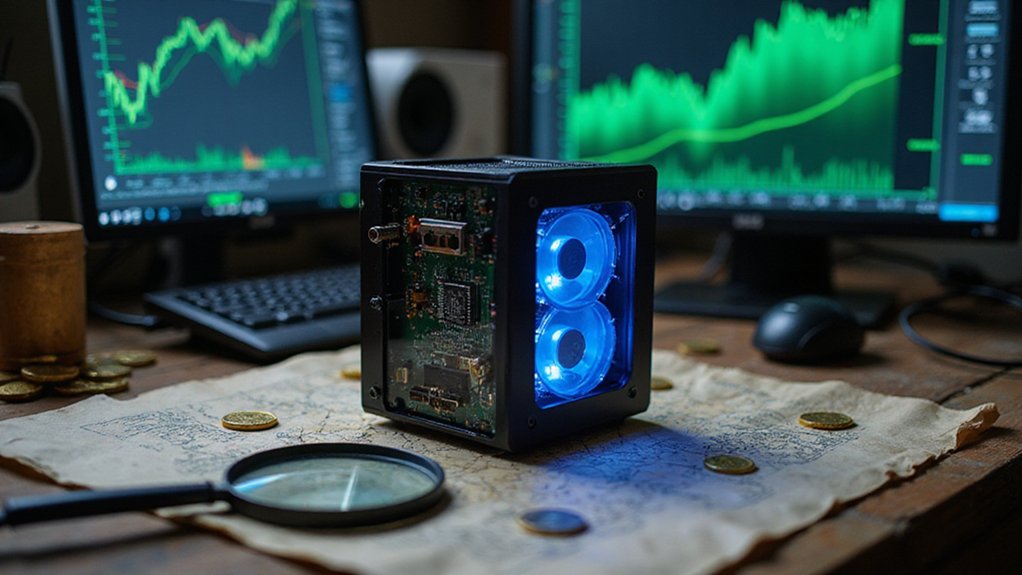Lightning rarely strikes twice, but in the peculiar world of Bitcoin mining, a solo miner wielding 2.3 petahash per second of computational power recently defied astronomical odds to claim a $350,000 jackpot—a feat roughly equivalent to winning the lottery while simultaneously being struck by that proverbial lightning.
The mathematics behind this windfall reveal the audacious nature of solo mining ventures. With Bitcoin’s network hash rate hovering in the hundreds of exahashes per second, our intrepid miner’s 2.3 petahash contribution represents a minuscule fraction of the global computational force securing the blockchain. Yet this David-versus-Goliath scenario occasionally produces spectacular victories, validating the lottery mining approach where hobbyist miners chase the elusive full block reward rather than settling for pool mining‘s predictable but modest shared returns.
Against overwhelming computational odds, this solo miner’s microscopic hash rate conquered Bitcoin’s vast network through sheer mathematical audacity and persistence.
Solo mining operates on a winner-takes-all principle that would make casino operators weep with envy. While pool participants receive steady, proportional payouts based on their contributed hashrate, solo miners endure extended periods of computational silence punctuated by potentially massive rewards. The successful miner discovered a block containing newly minted Bitcoin plus transaction fees, capturing the entire reward rather than splitting it among thousands of pool participants. The complete block reward transaction becomes permanently embedded in the blockchain through on-chain transactions, ensuring immutable record-keeping of this extraordinary mining success.
This particular jackpot occurred during a period when block rewards maintain their pre-halving potency, though the scheduled reduction events every four years continue reshaping mining economics. The lucky miner’s ASIC hardware—those specialized computational workhorses designed exclusively for Bitcoin’s cryptographic puzzles—operated continuously, consuming substantial electrical power while generating enough heat to warm a small building. Mining success requires miners to generate cryptographic numbers that match the network’s difficulty level, often demanding trillions of computational attempts before finding a valid solution. Mining operations face growing scrutiny over their environmental concerns due to the massive energy consumption required to power these computational networks.
The broader implications extend beyond individual fortune. Each successful block discovery validates transactions and maintains the blockchain’s integrity, contributing to Bitcoin’s decentralized security model. Even seemingly impossible solo wins reinforce the network’s democratic principles: anyone with sufficient computational resources can potentially claim block rewards, regardless of their mining operation’s scale.
This extraordinary outcome illustrates why lottery mining persists despite overwhelming odds. The allure of capturing a complete block reward—currently worth hundreds of thousands of dollars—continues attracting miners willing to gamble on computational probability rather than accepting pool mining’s steady but diluted returns.






